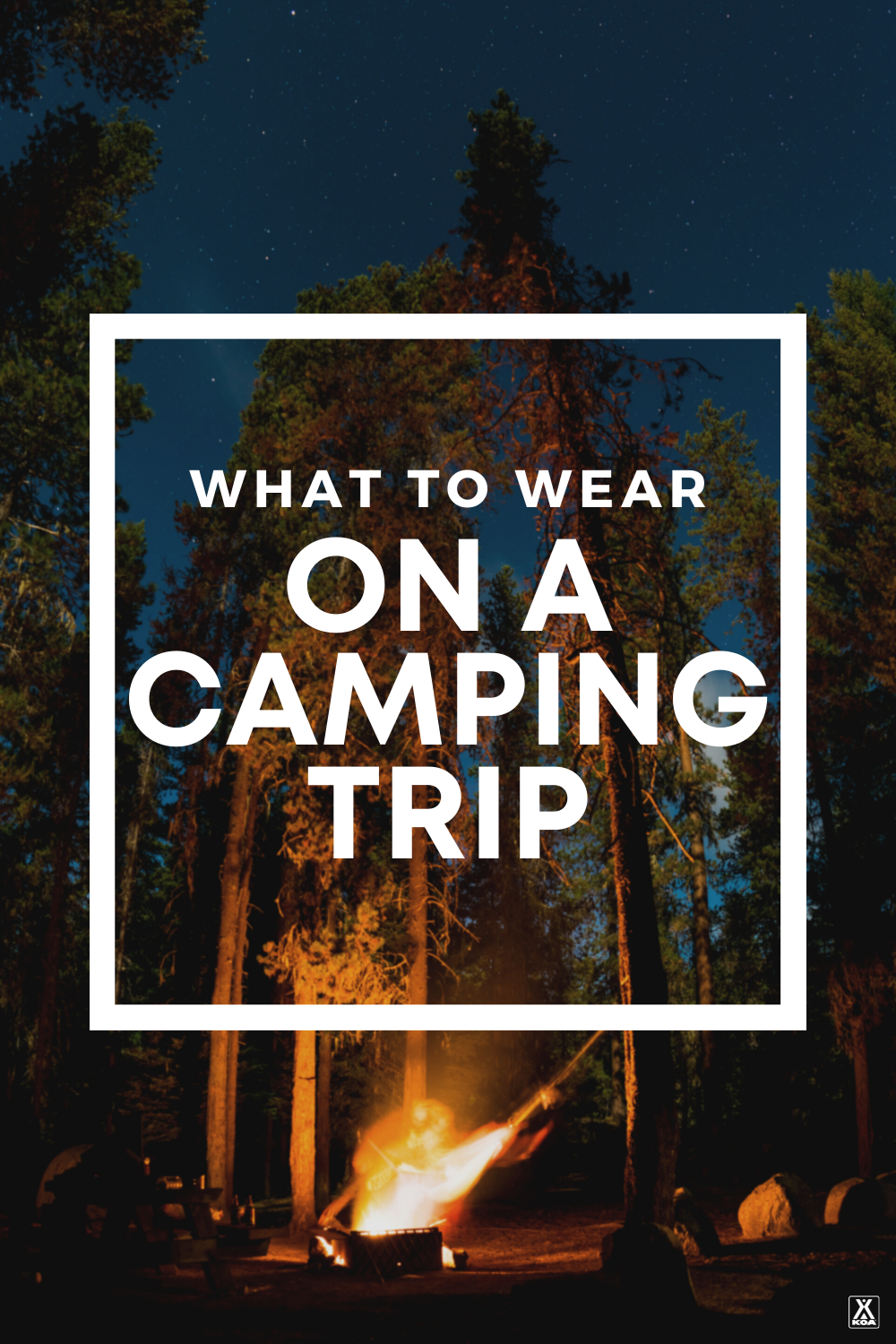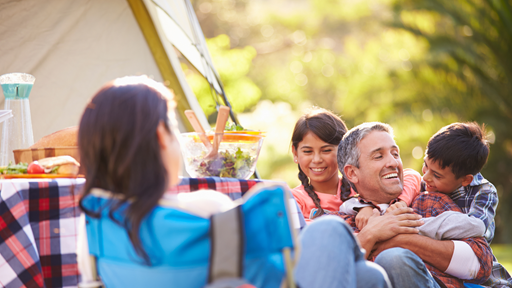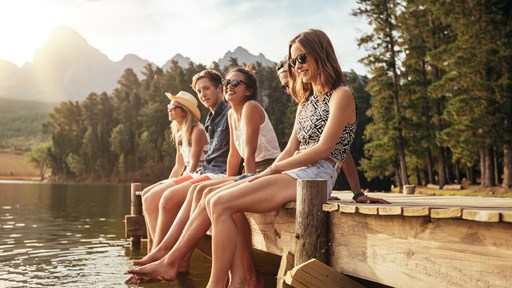Packing clothing for any trip is a task that requires careful thought and consideration — especially camping. What are your plans for your trip? Will you need any special attire? Do you need to purchase new items before you head off on your adventure? All of these questions and more are thoughts that you and many others have while your suitcase, duffel bag or backpack lies empty before a trip.

If you are going camping, functionality is key. Because you will spend most of your time outside in the sun with dirt, bugs and other aspects of the outdoors, you will need to consider multiple factors about your trip to help pack the best outfits. These days, though, you can usually find pieces that offer just as much style as they do practicality.
Whether you are camping during the spring, summer, winter or fall, you want to ensure you bring the perfect apparel. Learn how to dress for a camping trip and what clothing items are a must-have in your suitcase.
Why Is It Important to Pack Carefully for Camping?
Bringing the right camping outfits on your trip will help make your stay in the outdoors more comfortable and enjoyable. While you can plan for some situations when you are going camping, the outdoors can be unpredictable. It is important to consider all of the possible situations that can happen so you take the right clothes on the trip.
Here are four reasons why it is important to pack carefully for a camping trip:
- Be ready for the weather: Whether you are camping in hot weather or cold weather, packing clothing that is appropriate for the climate can help you protect yourself and enjoy your time outside. The weather will depend on the destination and time of year you are going camping. If you are camping near a lake in July, you will want to bring clothing that will keep you cool and protect you from the sun, plus something to swim in. Always look at the weather in advance.
- Protect yourself from bugs: When you are planning activities like hiking or sitting around a campfire at night, consider clothing that can help protect your skin from mosquitos, ticks and other bugs that are common in various outdoor settings. While your camping attire can help with bugs, you should always remember to pack plenty of bug spray for added protection.
- Pack items that can get dirty: Being exposed to the outdoors means getting a little dirty. Pack clothing that you do not mind getting mud on and will survive if it gets wet.
- Pack for any special activities: Consider all of the activities you are planning to accomplish during your trip when you are picking out camping outfits — swimming, hiking, recreational sports, fishing, telling stories by a campfire and roasting marshmallows are just a few of the activities that are popular in the camping community.
As you can see, there are many reasons why you should carefully select your camping outfits before heading off on your trip. That said, out of all of the things to consider, the time of year should be at the top of your list. Wherever you are traveling, your destination’s weather during that time of year will impact what you put in your suitcase.
Read on to get camping outfit ideas for each season.
Camping Outfit Ideas for Every Season
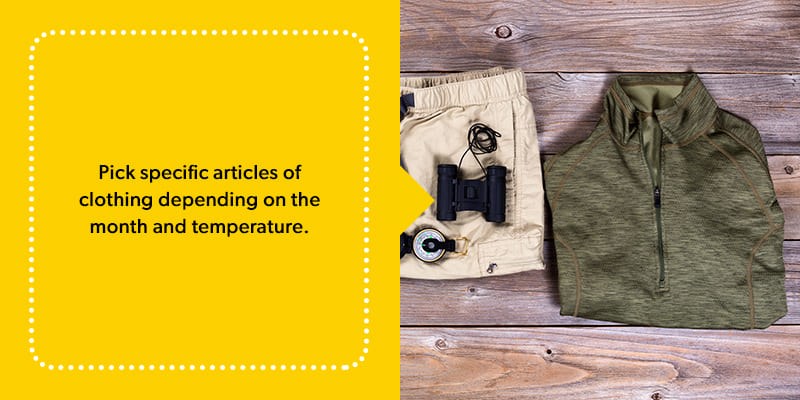
When you are trying to find the best camping outfits, it may help to first split up the attire between winter and fall camping and spring and summer camping. From there, you can pick specific articles of clothing depending on the month and temperature. This trick will help you keep everything organized in your wardrobe.
Check out some of the best clothing to pack before traveling to a campground in any season.
What to Wear When Camping in the Spring and Summer
In most places in the United States, spring and summer are known for their warm temperatures and are a popular time for people to travel. With the air starting to warm up, campers are ready to get outside and travel to their favorite campgrounds.
The weather during the springtime and summertime in North America during these seasons can vary drastically. While the southern region of the U.S. can have hot springs and even hotter summers, the northern part of the U.S. and Canada may have some warm and cools days during the springtime. A summer camping trip in Alaska will feel different from one in Florida, which is why location plays a big role in your camping attire.
Check the local weather forecast leading up to your trip to see what the temperatures will be. This way, you will have a clear idea of what to expect when you are there. Do not forget to pack a few extra items, like a raincoat, just in case the weather takes a turn after you arrive.
If you are looking for spring or summer camping outfits, check out some of the following pieces:
1. Moisture-Wicking Clothing
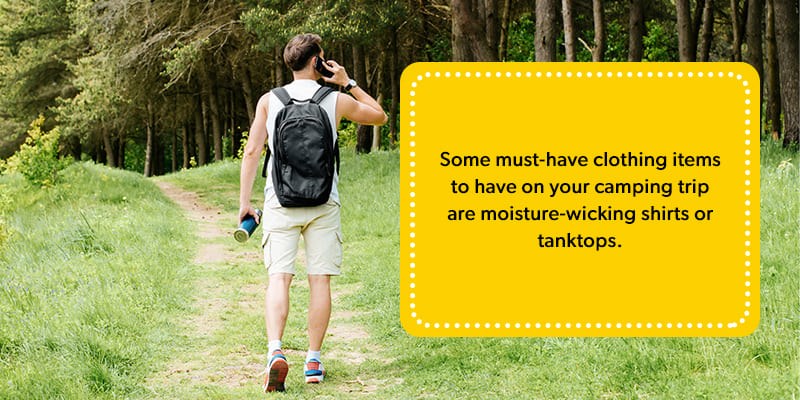
In the spring and summer, there is a good chance you will be sweating while you are outside. Some must-have clothing items to have on your camping trip are moisture-wicking shirts or tanktops. These shirts are made out of a high-tech polyester fabric, which absorbs sweat and moisture from your body. This type of clothing helps you cool off even on the hottest days in the spring and summer.
There are a variety of men’s moisture-wicking shirts and women’s moisture-wicking shirts that will be a savior during a hot spring or summer day. These shirts are great for exploring the campground, going on a hike or participating in other outdoor activities.
2. Sun Hat
Packing a couple of different hats on your camping trip is a must. Both a wide-brim hat and a regular ball cap or visor are perfect for hanging around the campsite and exploring your surroundings. The right caps will keep you protected under the sun and keep bugs away from your face.
If the forecast for your camping trip predicts plenty of sunshine, hats are a must. Check out different types of sun hats and hats with SPF protection to bring on your camping trip.
3. Quick-Drying Socks
Pack plenty of socks on your camping trip to pair with your sneakers, boots and other closed-toe shoes. Some of the best socks for camping are durable quick-drying socks. Walking around in the outdoors can lead you to some muddy pathways, puddles and other wet landscapes, and quick-drying socks will be your best friend when your feet get wet.
On your search for quick-dry socks, look for pairs that are thin so your feet do not get too warm during the hot spring or summer days. There are both men’s and women’s quick-dry socks you can wear while hiking or simply exploring the campground.
4. Quick-Drying Shorts and Pants
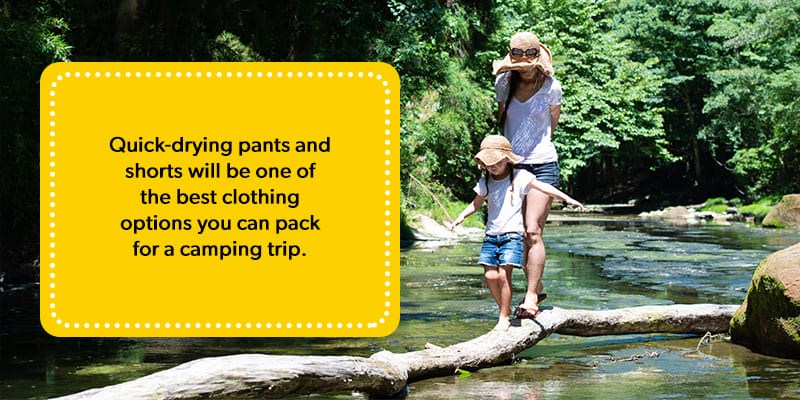
Packing jeans may seem like a good idea, but you will need a pair of bottoms that will keep you comfortable during a walk through nature. Quick-drying pants and shorts will be one of the best clothing options you can pack for a camping trip when you are planning on exploring the space around you.
These pants are made out of a mixture of polyester, spandex and nylon. This combination of materials makes the bottoms quick-drying, moisture-wicking and breathable. There are even options that are water-resistant. Check out different styles of men’s quick-drying pants and women’s quick-drying pants for an excellent addition to your camping wardrobe.
5. Layers
While the daytime temperatures may be warmer during the spring and summer, the temperature during the nighttime might be cool at your destination. Sleeping in a T-shirt and shorts might not cut it during a chilly night. Therefore, including a few layering items in your suitcase will be perfect for nights where you need a little extra warmth.
Pack different types of extra layers for cooler days or nights on your trip, including sweatpants, joggers, long socks, long-sleeve shirts, sweatshirts and more. Campers should always come prepared with layers to stay comfortable, even when they think they will not need them.
6. Rain Jacket
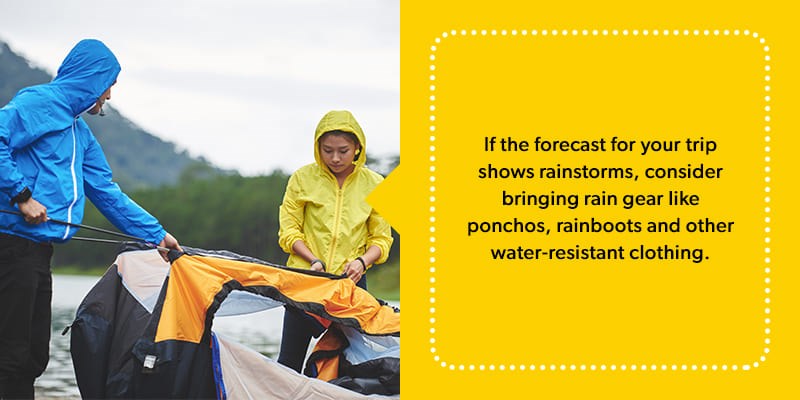
Whether or not the weather forecast shows rain, you should always bring a rain jacket on your camping trip. Both spring and summer are known to have rainy days. Some locations are also more likely to have pop-up rain showers throughout the day, and having a rain jacket is a necessity to help stay dry while you are outside.
If the forecast for your trip shows rainstorms, consider bringing rain gear like ponchos, rainboots and other water-resistant clothing to stay dry and enjoy your time. Different types of men’s and women’s rain jackets are available to bring on your next camping adventure.
7. Swimsuit
If the campground you are visiting has access to a body of water like a swimming pool, you cannot forget to bring a swimsuit. The spring and summer months can offer beautiful weather that is perfect for taking a dip in the water.
8. Water Shoes
Are you planning to swim in a lake or explore a river on your camping trip? Something that will help protect your feet but allow you to enjoy the water is a pair of water shoes. Adding a pair of water shoes to your camping outfit checklist will be a great addition to your swimming and adventuring attire.
What to Wear When Camping in the Fall and Winter
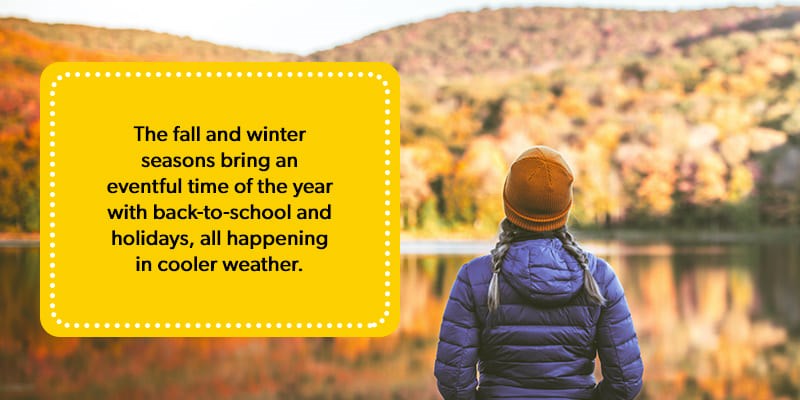
The fall and winter seasons bring an eventful time of the year with back-to-school and holidays, all happening in cooler weather. Nature around North America shows its diversity, with northern regions exhibiting cooler temperatures that come with changing colors and snow covering the ground. These two seasons can be some of the best times of the year to plan a camping trip, especially if you like to hike.
The packing list for a fall or winter camping trip looks different than one for the spring and summer. While some locations in North American will still have some warm days that are great for shorts and short-sleeve shirts, most locations will require some more coverage and layers to hang out outside.
Check out some of the items you will need to add to your packing checklist before you take off on your fall or winter camping vacation.
1. Beanie or Winter Hat
While hats protect your head, face and shoulders from the sun, another reason you should bring a hat on your camping trip is to help keep your head and body warm. A beanie or a winter hat is a must-have camping accessory if you know the temperature will be chilly during the daytime or nighttime.
Whether you want to keep your head warm while you are hiking, sitting by a campfire or enjoying any activity around your campsite, a knit cap, wool hat or fuzzy winter hat will help keep you comfortable. There are winter hats and fall hats perfect for your upcoming camping trip.
2. Layers

Camping during the winter and fall time means one thing — you have to layer up. Layering is one of the skills that campers have relied on for years. The three levels of layering include the base layer, mid-layer and outer layer.
The base layer includes clothing items like thermal gear, the mid-layer includes clothing like shirts and fleece jackets and the outer layer features waterproof jackets and pants. This clothing trick can help keep you warm, safe and comfortable on your camping adventure. As the weather gets warmer, take off your top layer to stay cool and vice versa.
3. Wool Socks
Keep your feet and toes warm while you are enjoying your campsite with a good pair of wool socks. These socks will help keep your feet warm when the temperature starts to drop, protecting you from health hazards like hypothermia. There are different colors and thickness levels of wool socks that will protect your feet on your trip. Make sure your thick socks fit well in any hiking or snow boots you pack for your camping trip.
4. Gloves
When the forecast predicts chilly weather, you want to make sure you have all of the clothing items and accessories you need to keep every part of your body warm. A piece of gear you need to remember to pack is a pair of gloves or mittens.
Bring gloves that will be best for the weather you’re expecting on your camping trip. If you are heading out to a campground and the forecast predicts snow, a thick pair of snow gloves that repel water will be a great option. If you are camping in the fall and are expecting cooler weather most days, a thin pair of gloves or mittens will be helpful on your trip.
When your gloves get wet, be sure to properly dry them so you can keep your hands warm — wearing soaking wet mittens will do very little to keep you protected from the elements.
5. Waterproof Jacket
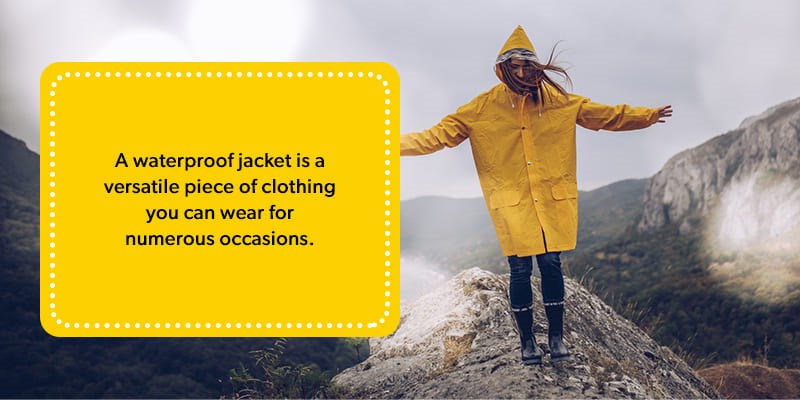
The weather during the fall and winter seasons can be unpredictable. Whether it is sunny, raining or snowing, a waterproof jacket will help keep you warm when it is cold outside and protect your other clothing layers from getting wet.
A waterproof jacket is a versatile piece of clothing you can wear for numerous occasions. The structure of these jackets makes them durable and can last you a long time. Browse through an array of styles, from lightweight to a thicker design, to can find the perfect men’s or women’s waterproof jacket for your next trip.
6. Waterproof Boots and Sneakers
If you are planning on taking a kayaking trip or going on a hike, the next item on your camping checklist should be a pair of waterproof boots. This type of footwear will protect your feet from getting wet as you walk through puddles, rivers, snow and other wet areas that you will pass through.
Having wet socks and shoes can be uncomfortable, causing you to cut your activity short. Additionally, they can be unsafe, especially when it is already cold outside. Investing in a quality pair of waterproof hiking boots is beneficial for your camping trip in the fall or winter.
7. Quick-Dry Clothing
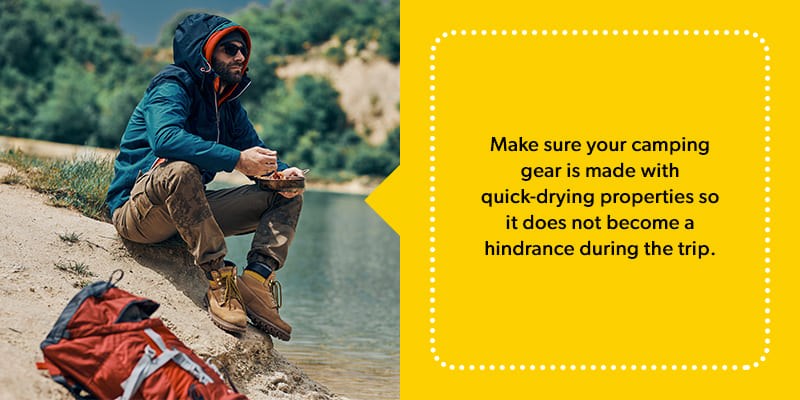
Quick-drying clothing is a must for any camping trip. If you are walking near bodies of water, a rainstorm rolls in or you become sweaty after a fun camping activity, you want your clothing to dry as quickly as possible so you can continue enjoying your day in comfortable clothing. Make sure your camping gear is made with quick-drying properties so it does not become a hindrance during the trip.
8. Vest
A simple yet effective way to add an extra layer when it is cooler outside is to put on a vest. These are a fall staple and can be great for locations with mild winters. Pair them with long-sleeve shirts or light jackets to keep you warm while you hang out around your campsite.
There are many styles and colors of men’s vests and women’s vests you can pick.
What Not to Wear When Camping
There is a large selection of clothing options you can take with you on your camping trip. In general, you need to bring the essential clothing items that protect you from the rain, sun and other outdoor elements to get the most out of your camping experience. If you are an avid camper, you should consider investing in basic quality pieces you can use to build a comfortable and protective outdoor wardrobe.
All that said, you should consider what you should not pack when camping. While you may be tempted to bring certain items, you can save backpack space by not bringing them. Here are some items you will not need to take with you when you head to the campground:
- Flip-flops
- Expensive articles and jewelry
- Cotton clothing
- Denim clothing
- White-colored clothing
- Perfume and cologne
These items are unnecessary, uncomfortable and may not keep you safe, as scented body products can attract wildlife to your campsite. Be sure to keep the items listed above out of your bag so you have more room for gear that you will actually want to wear.
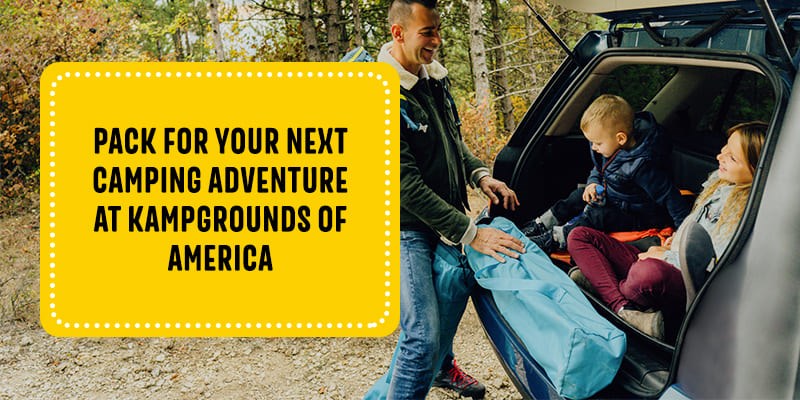
Pack for Your Next Camping Adventure at Kampgrounds of America
Every season is camping season when you can visit a KOA campground! Pack all of the camping attire you’ll need and enjoy one of our more than 500 campgrounds across North America. Whether it’s sunny or snowing, you can have a memorable camping trip with KOA.
Learn more about camping with KOA to start planning your camping adventure!
About the Author: Kampgrounds of America
Kampgrounds of America is the largest system of open-to-the-public campgrounds in the world, with over 500 locations across the United States and Canada. Founded in Billings, MT in 1962, KOA’s family of campground brands – KOA Journey, KOA Holiday and KOA Resort – today serve more than a million camping families each year. KOA is dedicated to “connecting people to the outdoors and each other” by providing people with a variety of camping experiences and the information they need to make the most of their camping trip. Read more of their camping and travel resources by visiting KOA.com/blog.
